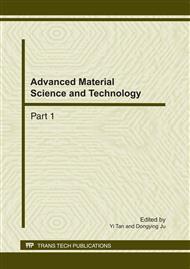p.555
p.559
p.563
p.567
p.571
p.575
p.579
p.585
p.589
Features of Grain Boundary Character Distributions in a Austenitic Stainless Steel after Cold Rolling with Low Strain Followed by Single and Two-Step Annealing
Abstract:
The grain boundary character distributions (GBCDs) of two 304-type austenitic stainless steel samples, which are cold rolled with the same thickness reduction of 6% and then subjected to different annealing treatments are examined by Electron back-scatter diffraction (EBSD) techniques. The results indicate that, after 6% cold rolling, the two-step annealing (900°C/1 h+1050°C/5 min, Sample B) resulted in a quite different GBCDs compared with that obtained by single-step annealing (1050°C/5 min, Sample A) regardless of nearly the same fractions of S3 boundaries developed in the two samples. It was evidenced that large-sized cluster of grains interfaced by S3n boundaries (S3n CG) emerged in sample B, in which there are moderate preferential grain orientation distribution and {111} grain boundary plane distributions. Further discussions highlighted that, in the case of two-step annealing, the first annealing at relatively low temperature (900°C) for short time (1h) contributes a lot to the final optimization of GBCD and strain induced preferential boundary migration (SIBM) accompanied by multiple twinning via the migration and interactions between mobile S3n boundaries, especially incoherent S3 boundaries, might be the responsible mechanisms.
Info:
Periodical:
Pages:
571-574
Citation:
Online since:
February 2011
Authors:
Price:
Сopyright:
© 2011 Trans Tech Publications Ltd. All Rights Reserved
Share:
Citation:


